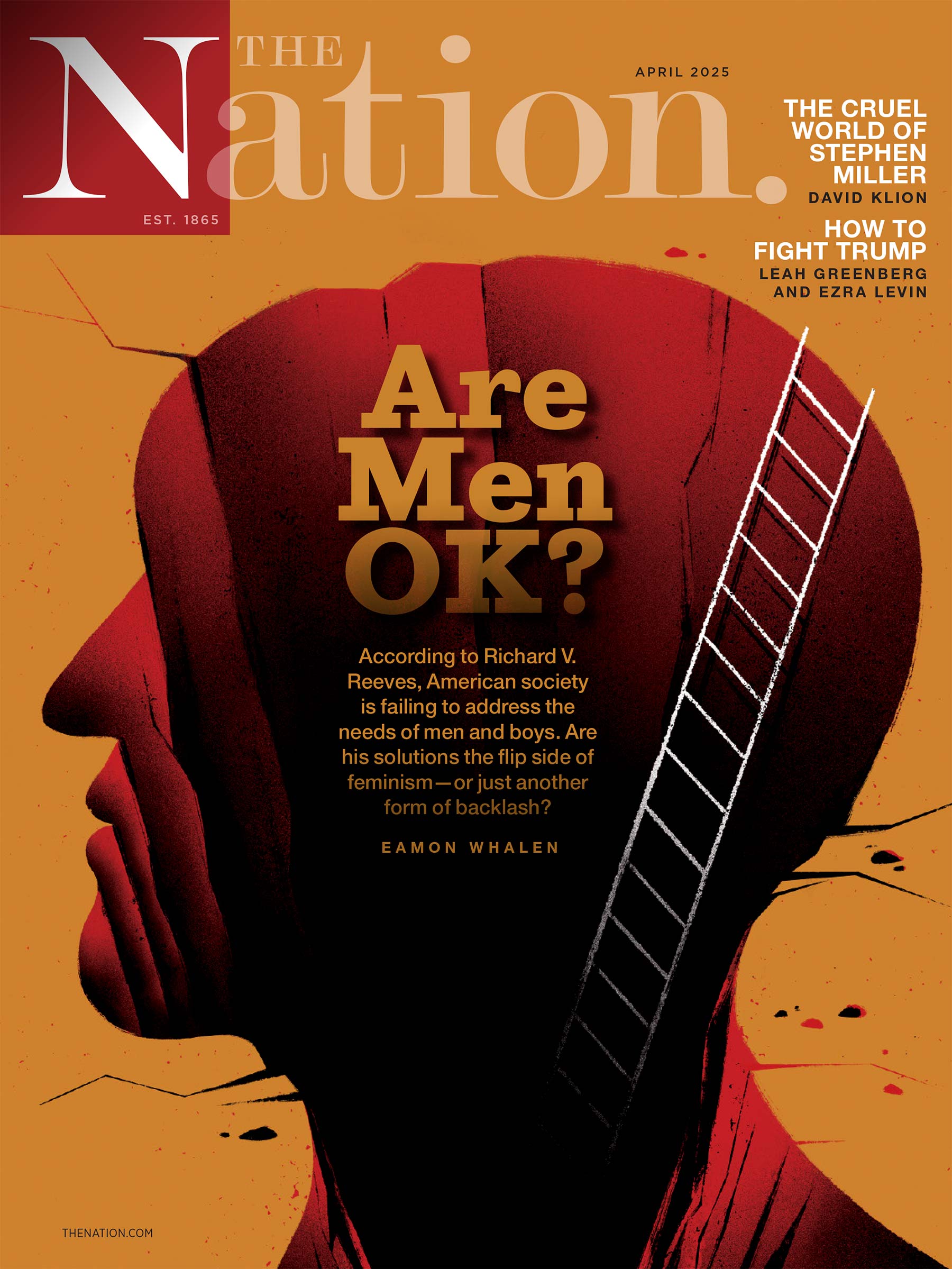Last week, I stayed on Bunker Hill, in Downtown Los Angeles, at the glorious art deco Millennium Biltmore. With downtown hotels desperate to lure visitors in, the prices were so heavily discounted that (at least before the absurdly high parking fee was added on) it didn’t cost that much more than staying at a low-end motel. It was the first time since the pandemic began that I had visited the city. In LA to report a Nation story, I’d actually gotten on a plane and flown somewhere to do in-person interviews for the first time in more than a year.
In “normal” times—whatever that now means—the skyscraper district of Los Angeles is filled with besuited, rushing men and women. People in a hurry. Executives with their Starbucks coffees, their boxed salad or sushi lunches, their luxury cars parked in the garages underneath their glistening, touch-the-sky office buildings.
This time around, the great skyscrapers were largely empty—perhaps one in 10 of the offices seemed, from the ground looking up, to have their lights on. Only a few restaurants and cafes were open, and they were following rigid guidelines as to how long they could serve and how many people they could admit. The frenetic hustle-bustle of a great downtown was eerily absent.
On Bunker Hill, instead of its usual denizens, hipsters on skateboards and scooters and go-bikes had taken over the steep streets, careening down the slopes of Grand Avenue at shockingly high speeds. There was a determined joy to their actions, a sort of wild abandon, but underlying it all, there was also a distinctly apocalyptic edge.
Los Angeles’s downtown has long been the purview of the homeless; these days, however, they vie with the skateboarders for numerical dominance of the Bunker Hill area. Head east, toward Skid Row, and it’s no contest. There are thousands upon thousands of people living in shanty towns—under tarps, in tents, in cardboard constructs—in a Skid Row that seems to have leapt its bounds, expanding outward into the abandoned central city beyond. Drive around the spaghetti freeway junctions that surround downtown, and one sees rows of tents lining every underpass and every overpass, as well as individual tents perched precariously on the earth sidings by the sides of freeways.
California’s homeless numbers are increasingly dystopian. A recently released federal report, by the Department of Housing and Urban Development, estimated that even before the pandemic California had over 160,000 homeless, of whom 66,000 lived in Los Angeles County. Public health data indicates that homeless residents are far more at risk of dying of Covid than are the housed.
Walking around the Downtown LA area, seeing the young hipsters and the haggard homeless reclaiming the territories ceded by their well-paid, suit-wearing, peers, I felt like an anthropologist in a modern-day setting of Palenque, the magnificent, but ruined, Mayan metropolis in what is now the southern Mexican state of Chiapas. When I first visited that city, in my mid-20s, I was overwhelmed by the sheer disruption the place had undergone. More than a thousand years ago, a powerful, sophisticated civilization had thrived there; had built extraordinary palaces and temples, sports arenas and plazas; had decorated them with colorful paintings, with vast sculptures, with stone monuments etched with the great stories of the age. Now, what was left was stone ruins, pyramids, and towers—the paint largely obliterated, the stones bare—peeking out of the encroaching jungle, in the trees of which howler monkeys screamed their early morning song.
It was a hauntingly beautiful sight, one I shall never forget. But to understand how, once upon a time, that landscape was inhabited, was used, what functions the buildings performed, and how the complex urban ecosystem of the place operated… well, to do that I would have had to take years of university courses. Even then, I would only ever have been able to conjure up a dull approximation of a reality long since vanished.
On Bunker Hill last week, I had that same vertiginous sensation, as if I were an anthropologist wandering through a massively fractured landscape. The buildings were as I remembered them—too big to fail, too permanent to fade in the face of a virus. But everything else was different. The hustle-bustle ecosystem had vanished, as had, at least temporarily, the rationale for the concrete-and-steel skyscraper landscape. The Gehry-designed Walt Disney concert hall still looks just as wondrous and bizarre as it did in 2019, but there is now no music inside.
With the hypersonic elevators to the heights of downtown’s skyscraper towers largely empty, it is the ground level that has been reclaimed, by masked residents of central-city condos, walking their dogs and jogging through the streets; by the skateboarders and the homeless; by a few hardy film crews; by a handful of tourists. The fabled downtown traffic is gone; the roads are largely empty.
I imagine downtowns around the country—perhaps around the world—look somewhat the same right now. But perhaps because Los Angeles is so spread out, its downtown so very, very far from its sprawling suburbs, the center feels particularly hollowed out.
Life post-pandemic isn’t going to be the same as before the Covid plague took hold. I can’t see a scenario in which, overnight, all those darkened offices suddenly turn their lights on again, and I can’t imagine hundreds of thousands of workers suddenly ceasing, all at once, to work remotely. I’m sure that, over time, the skyscrapers will resume their purpose. But for now, at least, our great city centers have become modern-day Palenques, places whose function in the cosmos has been displaced, now inhabited by the discarded and the marginalized, the left-behinds of our brutal, winner-take-all culture. It’s a humbling and, frankly, quite terrifying, realization.


